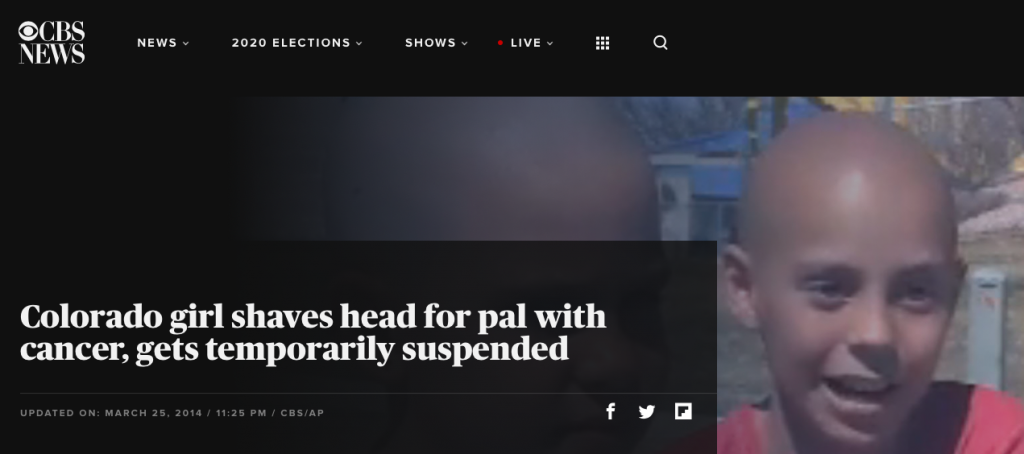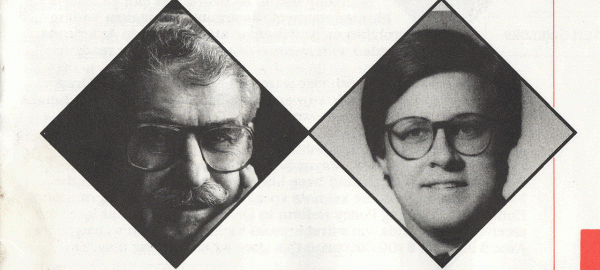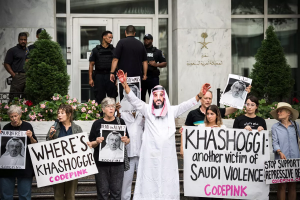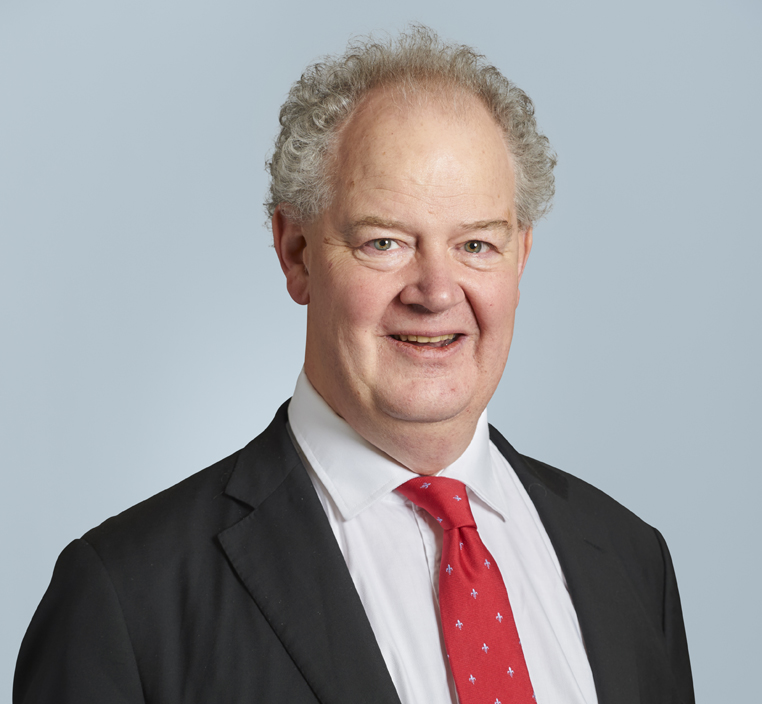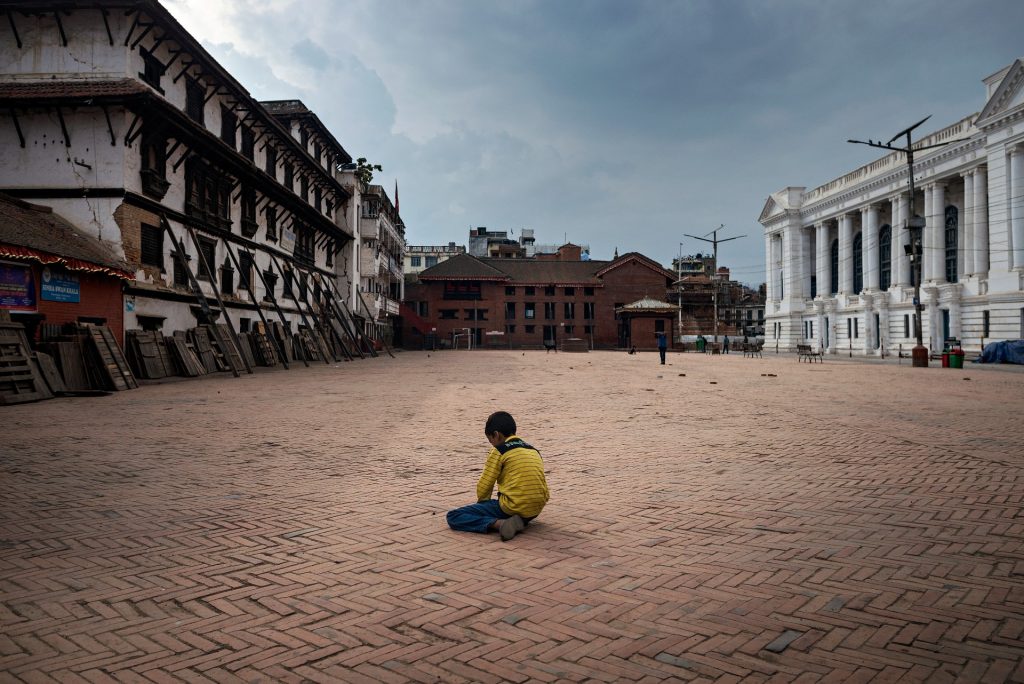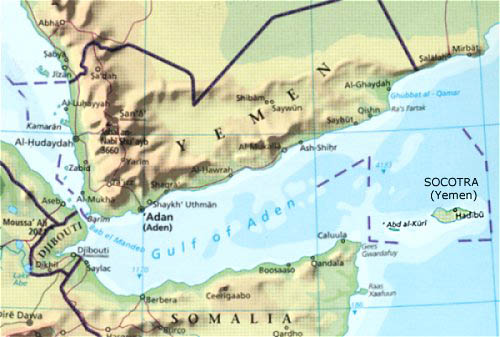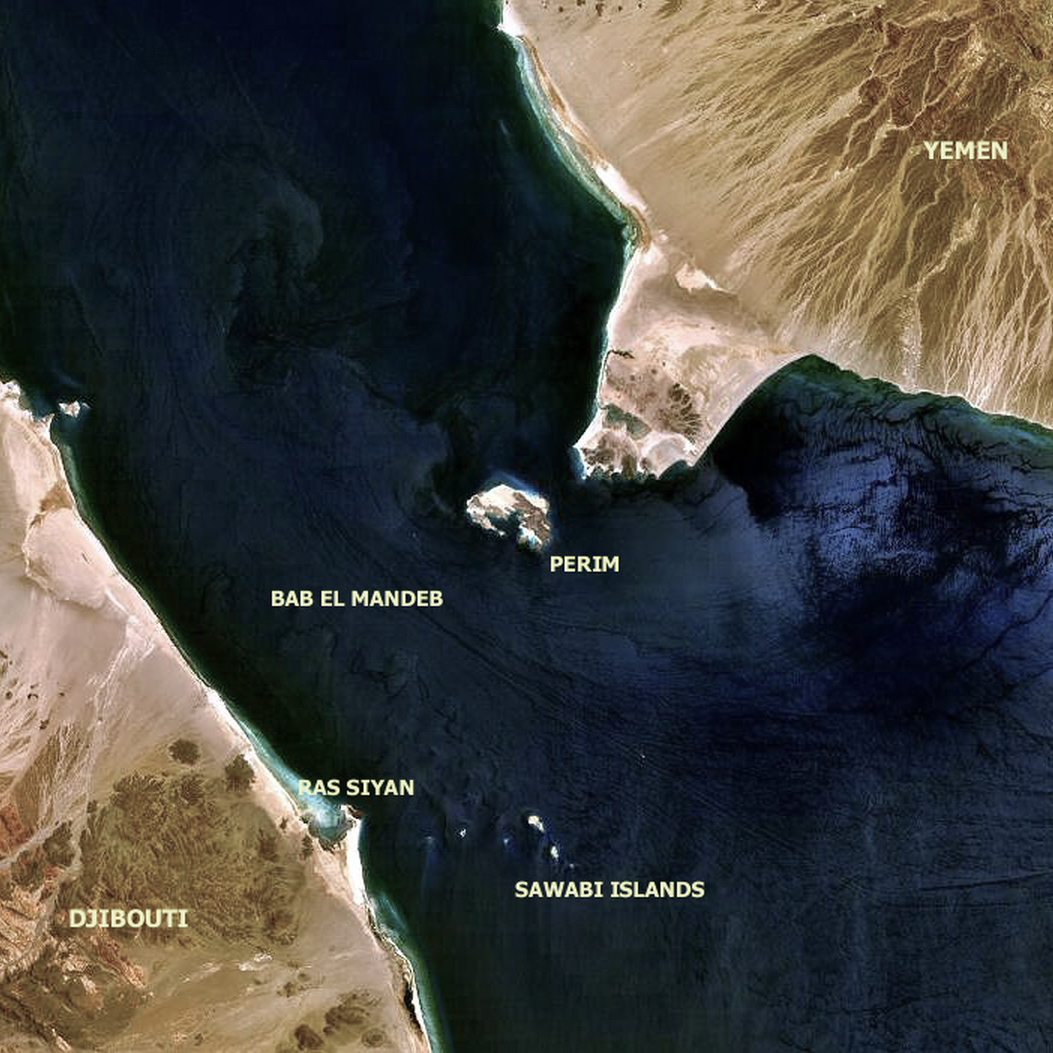Mali’s recent history has been a succession of disputed presidential elections, military coups, insurgencies, civil war and international conflicts. Although there are significant deposits of gold in the country, the country’s strategic location in the centre of the Sahel region of north western Africa and the emergence and rapid growth of ‘jihadist’ armed groups throughout the region following NATO’s overthrow of the Libyan government in 2011 are the main reasons the country has received more international attention than is usual for remote, impoverished African countries.
The military coup staged in Mali last month is the second since 2012, and was prompted by many of the same fundamental factors and causes.
Political situation in Mali
The French began colonizing the area now covered by Mali during the 1880s and 1890s. As the colony of French Soudan, Mali was administered with other French colonial territories as the Federation of French West Africa. In 1956, with the passing of France’s Fundamental Law (Loi Cadre), the Territorial Assembly was granted limited autonomy. After the 1958 French constitutional referendum, the Republique Soudanaise became a member of the French Community and was granted a greater degree of autonomy.
In January 1959, Soudan joined Senegal to form the Mali Federation, which was granted independence within the French Community on 20 June 1960. The federation collapsed on 20 August 1960, when Senegal seceded. On 22 September Soudan proclaimed itself the Republic of Mali and withdrew from the French Community, re-joining it in 1967.
After many years of single-party government, a military coup ousted President Moussa Traoré in 1991 following mass protests and rioting and the constitution was suspended. Amadou Toumani Touré took power as the Chairman for the ‘Transitional Committee for the Salvation of the People’. A draft constitution was approved in a referendum on 12 January 1992 and political parties were allowed to form.
On 8 June 1992, Alpha Oumar Konaré, the candidate of the Alliance pour la Démocratie en Mali (ADEMA, Alliance for Democracy in Mali), was inaugurated as the President of Mali’s Third Republic. President Konaré was again elected president in 1997.
General elections were organized in June and July 2002. President Konare did not seek reelection, and retired General Amadou Toumani Touré, former head of state during Mali’s transition (1991-1992) became the country’s second democratically elected President as an independent candidate in 2002. He was re-elected to a second 5-year term in 2007. LINK
Although in hindsight the twenty-year period ending with the end of Touré’s second term in 2012 was marked by relative stability (at least up until 2011) it was also marked by endemic economic stagnation and corruption, and the grievances of ethnic minorities in the north were not addressed, leading to the widespread rebellion by many Tuareg communities in the far north of the country which was cited by the military as the main reason for them to oust the president, so that they could re-establish security throughout the country and defend its territorial integrity.
Incidentally, some media reports at the time commented that:
A US Africa Command official confirmed on Friday the leader of military coup d’état in Mali has visited the US on several occasions, receiving professional military education.
Captain Amadou Haya Sanogo participated in the America’s International Military Education and Training program, sponsored by the US State Department, Public Affairs representative Patrick Barnes revealed to The Washington Post…
On March 22, just a month before a presidential election in the country, Sanogo and soldiers loyal to him stormed the presidential palace in the capital Bamako and overthrew President Amadou Toumani Toure…
The coup claimed three lives, leaving about 40 wounded…
Despite condemning the coup, the US is not planning to reconsider its $140-million aid program to Mali in 2012.
Conversely, on Friday the African Union suspended Mali’s membership of that organization. LINK
In the aftermath of the 2012 military coup Jeremy Keenan commented, as hasty and poorly organized preparations were being made in mid-2013 to hold presidential elections:
“Since February, when France in particular, began pressing for an early presidential election to provide some semblance of a legitimate government, the separatist Kidal region has effectively been ruled, with the backing of the French military, by the MNLA (National Movement for the Liberation of Azawad), the predominantly Tuareg group who began the rebellion for an independent Azawad (the Tuareg name for northern Mali) in January 2012.”

Main locations of major ethnic groups in Mali

Most armed conflicts have occurred in the remote and arid north of the country
At the time the French commanders were attempting to prevent massacres of civilians as well as widespread clashes between the two belligerent forces which could have quickly degenerated in all-out and irreversible civil war, something which they ultimately achieved. Gradually the situation was calmed somewhat:
“On June 18, after several weeks of intense negotiations, a peace deal was signed in Ouagadougou between the Malian government and the MNLA and the more recently formed HCUA (Haut Conseil pour l’Unité de l’Azawad). These two groups represented the Tuareg rebels who had begun the rebellion in January 2012. The accord, which called for an immediate ceasefire and for government troops to return to the rebel-held northern town of Kidal, paved the way for the July 28 presidential election.”
However, sporadic violence continued, each side accusing the other of being the instigator, and the subsequent presidential elections did not address the structural causes of the political and economic turmoil ravaging the country.
Moreover, beyond the armed insurgency and calls for succession in the far north, there are also persistent and increasingly deadly disputes between different ethnic groups in central Mali.
Central Mali is populated by, among others, the Fulani, the Dogon, and the Bambara. The Fulani are a primarily Muslim ethnic group of seminomadic herders. Across West and Central Africa, as many as 38 million people belong to this group. The Dogon, a group of as many as 800,000 who practice a polytheistic religion (a small number practice Christianity and Islam), are largely based near the border with Burkina Faso and are mainly farmers. The Bambara, meanwhile, are the largest group in Mali. Most are primarily farmers as well and many practice Islam, although others follow traditional belief and worship ancestors.
Grievances between the three communities are long-standing, often relating to disputes over land and water.
In the past, disagreements were typically resolved quickly. But containing the fighting is getting harder and harder to do. LINK
As the country attempted to organize elections in 2013 Keenan commented that:
Many experts are of the view that the country needs several months of peace, stability and political education before an election can be held. But that political time and space has not been granted. The needs of France, the US, EU, UN and other international agencies for a semblance of a legitimate government able to receive international funds has taken precedence over the real political needs of the country’s people. The appointment of an elected government is a prerequisite for the release of much needed foreign aid, most of which was suspended following the March 2012 coup.
The tumultuous period was also marked by the beginning of the massive influx of weapons and fighters from the now ‘failed State’ of Libya beginning in 2011 followed by a substantial military intervention by France in 2013 and later the establishment of multinational military forces under the aegis of the United Nations, the regional organization ECOWAS and the more recently formed ‘Sahel-5’ group of neighbouring countries.

Mali’s strategic location has added to its problems
Following large scale protests against endemic insecurity, poverty and corruption in the country, the military staged another coup last month, and the coup’s protagonists succeeded in capturing President Ibrahim Boubacar Keita and Prime Minister Boubou Cissé near the capital, Bamako.
Under the banner of the June 5 Movement, a broad coalition of opposition parties, religious leaders, and civil society protested Keita’s 2018 re-election, claiming it was plagued by irregularities, and denounced the government’s effort to pack the Supreme Court with loyalists. The situation further deteriorated when the military killed 11 protesters. LINK
In the aftermath of the latest coup African regional organizations, France, the United Nations, and the United States have called for the restoration of the constitutionally-elected government. But that is unlikely to occur. On August 19 Keita announced that he had resigned in an attempt to prevent further loss. Cissé said that he understood the disappointment and frustration of the protesters who have held massive demonstrations in Mali’s capital.
The situation is reminiscent of the military coup in 2012, which was preceded by an explosive growth in what had been persistent low intensity armed conflict in the country due to an armed insurgency by Tuareg-dominated groups in the remote north of the country and the influx of ‘jihadist’ armed groups, both of which received a large influx of weapons following the overthrow of the Libyan government to the country’s northeast. Neither the countries in the region nor the international military forces sent to the region have managed to stem the large-scale movement of weapons and the growth of insurgent and extremist militant groups throughout the region.
Economy
Another contributing factor is the extremely poor state of Mali’s economy and social conditions more generally. Although total GDP and GDP per capita have increased over the last decade, beyond the generalized figures and apparent slight improvement in the overall economic situation of the country there is a great inequality in the distribution of wealth and income as well as economic and political opportunities. Most of the GDP growth is accounted for by gold production, which provides few jobs and much of the wealth generated has not benefited the people of Mali at all.
The unemployment rate is high and persistent (officially around 10% the real number is significantly higher), and essential services in many areas are rudimentary and inadequate.

Mali’s GDP, 1995-2020

Mali’s GDP per capita, 1995-2020

Mali’s unemployment rate, 1995-2020
SOURCE: tradingeconomics.com
In 2018, Mali exported $2.86 billion worth of goods and imported $3.6 billion worth of goods, resulting in a negative trade balance of $741 million. In 2018, Mali’s exports per capita were $150 and its imports per capita were $189.
Mali’s main exports in 2018 were gold ($2.59B), raw cotton ($93M), unprocessed wood ($37M), mixed mineral or chemical fertilizers ($32.1M), and oily seeds ($22.5M). Mali’s main imports in 2018 were refined petroleum ($549M), light pure woven cotton ($171M), cement ($148M), packaged medicaments ($147M), and broadcasting equipment ($80.7M).
According to one source (OEC), most of Mali’s exports went to United Arab Emirates ($1.33 billion), Switzerland ($1.19 billion), China ($85.2M), Uganda ($55M), and Burkina Faso ($36.6M). However, according to tradingeconomics.com in 2017 most of Mali’s exports were to South Africa (approximately $780 million), followed by Switzerland ($408 million), possibly reflecting disparities in the physical destination of exports and the locations of financial transactions and perhaps customers associated with them. Most imports arrived from Senegal ($699M), Cote d’Ivoire ($528M), France ($371M), China ($345M) and the Netherlands ($153M). SOURCE
It is thought that Mali has considerable natural resources, though most of them have not been exploited, or are subject to illegal and undeclared exploitation, and many prospective areas have not been explored:
The country is endowed with a host of mineral resources which include gold, uranium, diamonds, copper, iron ore, precious stones, zinc, manganese, bauxite, lead, lithium, bitumen schist, marble, gypsum, kaolin, phosphate, lignite, diatomic, and rock salt. LINK
Mali is Africa’s third largest exporter of gold behind Ghana and South Africa. There are three main gold mines located at Sadiola, Morila, and Loula. Sadiola (in the south of the country) and Morila (to the west) produce about 80% of the nation’s gold while the Loula mine (also to the west) opened more recently and is estimated to be capable of producing up to 250,000 ounces of gold per year.
Foreign military forces in Mali
There are some concerns that the presence of foreign troops in Mali may be generating new recruits for the ‘jihadist’ forces and/ or other insurgent or extremist groups even as they attempt to confront and eliminate them. Keenan argues that there could be a rational explanation for this apparent contradiction:
In 2003, former US defense secretary Donald Rumsfeld’s Pentagon published a series of maps of Africa which depicted the western Sahel (Mauritania, Mali, Niger, Southern Algeria, southern Libya, northern Nigeria and Chad) as a “Terrorist Corridor”.
While designed to demonstrate why Washington needed to take its global “war on terror” to North Africa, the maps were also part of the propaganda prepared by the Pentagon to support Rumsfeld’s Proactive, Preemptive Operations Group (P2OG). This was a covert program to provoke terrorist groups into undertaking violent acts, or to penetrate terrorist groups and local peoples to dupe them into conducting terrorist activities, often in the form of “false-flag” operations, in order to expose them or others to counterattack by US forces.
The most infamous P2OG operation in North Africa involved taking 32 European tourists hostage in the Algerian Sahara in 2003. Allegedly seized by “terrorists”, under the leadership of “Osama bin Laden’s man in the Sahara”, the operation was, in fact, a “false-flag” operation, managed on behalf of the US by Algeria’s Departement du Renseignement et de la Securite (DRS). It’s purpose was to justify the launch of the “Saharan-Sahelian front” in the “war on terror”.
The front was launched in January 2004 through what former president George W Bush called the Pan-Sahel Initiative (PSI), with 1,000 US forces rolled into action across Mauritania, Mali, Niger and Chad. Local people called it the “American invasion”. At the time, I warned that it would lead to a regionwide conflagration.
That has now been achieved. One decade later, on 8 May, France’s Defence Minister Jean-Yves Le Drian announced that France was deploying 3,000 troops, in addition to 1,000 retained in Mali, to fight militant Islamists across the Sahara-Sahel, which he described as “the danger zone, the zone of all types of smuggling”.
“It is absolutely necessary to solve the problems and the dangers of trafficking and terrorism across the region, ” said Drian “This area is key to the security of African states. But it is also for our own security. […] France is therefore reorganizing its forces to pursue counter-terrorism across several states.”
Equally disconcerting was Le Drian’s statement: “We will stay as long as necessary. There is no fixed date.”
French troops will be based in Mali, Niger, Chad and Burkina Faso, with more covert basing facilities available in Mauritania. In addition to its three major military bases at Gao in Mali, Niamey in Niger and N’Djamena in Chad, France is establishing a number of smaller bases, such as at Tessalit in northern Mali, Agades and Diffa in Niger, and Faya and Zouar in Chad.
The main difference between France’s operation and Bush’s PSI, apart from France deploying four times as many troops, is that unlike the PSI, it is not based on fiction. Rumsfeld’s “Terrorist Corridor” has become a self-fulfilled prophecy. LINK
While it is arguable the extent to which the exponential growth and proliferation of extremist groups in the region may be the result of a deliberate plan by powerful groups in Western countries to destabilize, militarize and dominate the region or whether it is purely the result of endogenous factors and a general failure to identify and effectively pre-empt ongoing developments, the military campaign by NATO to overthrow the Libyan government at any cost has undeniably contributed enormously to the region’s difficulties and in particular the severe deterioration in the security situation.
At least four immediate objectives were identified as being behind France’s decision at the time: heavily armed ‘jihadists’ were still operating in northern Mali; Mali serves as a major hub for trans-Saharan trafficking routes of weapons, fighters, drugs and other contraband; there were additional perceived terrorist threats to destabilize Chad; the threat posed by the considerable presence of Boko Haram in neighbouring countries. At the same time, the US maintained a substantial covert military training and assistance program in the region which only became public knowledge when three US commandos from the ‘Green Berets’ were killed in Niger.
Another detailed study, by Gary Busch, examines the long-term role and objectives of the French military in Africa. Among many other things, the study notes that during the de-colonization process France’s former colonies were obliged to sign a pact with their colonial master:
The Colonial Pact Agreement enshrined a number of special preferences for France in the political, commercial and defence processes in the African countries. On defence, it agreed to two types of continuing contact. The first was the agreement on military co-operation or Technical Military Aid (AMT) agreements. These covered education, training of soldiers and officers of African security forces.
The second type, secret and binding, were defence agreements supervised and implemented by the French Ministry of Defence, which served as a legal basis for French interventions within the African states by French military forces. These agreements allowed France to have pre-deployed troops and police in bases across Africa…
The Colonial Pact was much more than an agreement to station soldiers across Africa. It bound the economies of Africa to the control of France. It made the CFA franc the national currency in both former colonial regions of Africa and created a continuing, and enforceable, dependency on France.
In summary, the colonial pact maintained French control over the economies of the African states…
France not only set limits on the imports of a range of items from outside the franc zone but also set minimum quantities of imports from France. These treaties are still in force and operational. LINK
Beyond the US’ and later Europe’s ‘War on Terror’, in more recent times to the existing geopolitical plots and disputes pummelling the region has been added a new ‘Cold War’, as Western countries and experts express great concern over the increasing presence of Russia and China in many countries in the region.
The main foreign military forces that have been active in Mali since 2013 when they were first sent their in force include the following.
On 11 January 2013, France launched Operation Serval, deploying 1,700 soldiers, warplanes and helicopters to halt the southwards advance of jihadist groups that were taking over northern Mali.
In August 2013, France replaced Serval with Operation Barkhane, a mission that was extended to apply across the Sahel, an area the size of Europe. Barkhane is the largest operation deployed abroad by the French armed forces, with around 4,500 troops as of late 2019.
Ten French soldiers were killed during in Operation Serval and 28 more have been killed during Operation Barkhane.
The European Union Training Mission in Mali (EUTM Mali) was launched in February 2013 and consists of 620 soldiers from 28 European nations, tasked with training Mali’s army. The task force operates at a camp in Koulikoro, 60 kilometres northeast of the Malian capital Bamako.
In May 2018 the European Union extended the mission’s mandate for two years and almost doubled its budget to 59.7 million euros ($65.7 million), while expanding its duties to training for troops in the G5 Sahel force.
The first 6,000 UN peacekeeping troops of the United Nations Multidimensional Integrated Stabilization Mission in Mali (MINUSMA) deployed to Mali in July of 2013. The deployment replaced an African International Support Mission to Mali (AFISMA) which had been sent by the 15-nation Economic Community of West African States (ECOWAS).
As of late 2019 MINUSMA had approximately 13,000 Blue Helmets on the ground, one of the largest UN military operations in the world. More than 200 soldiers have died, including more than 100 killed in hostile action.
In November 2015, the G5 Sahel countries – Burkina Faso, Chad, Mauritania, Mali and Niger – decided to create a joint military force to fight extremist forces in the region. The targeted groups included Al-Qaeda in the Islamic Maghreb and the Boko Haram movement which has its main bases in northeast Nigeria.
However, the G5 Sahel military forces remain extremely limited in their capabilities due to a lack of funding, training and equipment. LINK

It has been reported that Turkey has recently signed a ‘military cooperation agreement’ with Niger, though there are very few details as to the location, size and activities of the anticipated Turkish military contingent beyond the ubiquitous ‘training and assistance’ objectives.
Main extremist and ‘jihadist’ armed groups in the region
The regional security situation has deteriorated to unprecedented levels since the overthrow of the Libyan government. Crux, a Christian news agency, states that as of late 2019:
Islamist militants with links to al-Qaeda and so-called Islamic State have continued to extend their reach across the region, even as they lose ground in the Middle East.
According to ECOWAS, a regional body for West Africa, over 2,200 terrorist attacks have taken place across the Sahel in the last four years, resulting in the deaths of 11,500 people. Thousands more have been wounded and millions of others displaced.
The Islamist insurgency is also stoking inter-tribal and ethnic tensions in the region, exacerbating the problem…
In 2012, the militants largely operated in northern Mali, where they joined forces with separatist Tuareg rebels to take over a number of strategic towns, including the legendary city of Timbuktu.
In January 2013, French forces dislodged them, but they later regrouped and spread into Central Mali, Burkina Faso and the Tahoua and Tillaberi regions of southwestern Niger.
And the spread of the insurgency has been aided by geography: The Sahel’s vast desert and porous borders make the flow of arms from Libya relatively easy. In addition, all three of the most affected countries have a weak state sector…
While jihadist groups used to primarily target government officials, soldiers and local leaders who opposed them, they are now attacking ordinary civilians and entire villages.
Churches are also a popular target, with Islamist groups trying to force the Christian population to convert to Islam or flee the region.
Burkina Faso is 60 percent Muslim, with Christians making up about a quarter of the population. Mali is around 90 percent Muslim, with Christians making up about 5 percent of the population. Niger is over 99 percent Muslim, with just 0.3 percent Christian. LINK

A report by Foreign policy describes the impact this has had in central Mali:
Jihadi groups have been able to exploit local concerns. Previously contained to the north by MINUSMA and the G5 Sahel force, jihadi groups have spread into the center of Mali and into Burkina Faso since 2015. Two are of particular concern. The first is the Group for the Support of Islam and Muslims (known as JNIM), which is affiliated with al Qaeda and claimed responsibility for the March 2018 attack on the French Embassy in Ouagadougou, Burkina Faso, and on Burkinabe troops near the village of Toeni in December 2018. The other group is Ansarul Islam, which was formed in 2016 and has received support from both al Qaeda and the Islamic State in the Greater Sahara.
Although Islamist terrorist groups have not taken control of territory in central Mali, they have been able to set up bases from which they launch raids on nearby villages and towns. They target the Dogon and Bambara, as well as those who are affiliated with—or provide information to—the security forces. JNIM has also conducted attacks it says are in retaliation for the targeting of the Fulani. LINK
According to a report by Human Rights Watch in 2018, the Fulani Islamist leader Hamadou Koufa Diallo is particularly influential in recruiting locals. Fulani groups have accused the Malian military of cooperating with armed groups from other ethnic communities to attack them on numerous occasions. However, the rank and file soldiers are also in an extremely difficult position, as they find themselves amidst warring communities and subject to ambushes by armed extremist groups that often outnumber them and are better equipped.
Some communities have also form their own militia groups for self-defence given the inability of the central government and international forces to protect them, however these armed militia groups have also been accused of attacking other ethnic communities in the region as they become embroiled in the escalating and increasingly violent disputes.
Future developments
The military coup has greatly complicated the fight against extremist and ‘jihadist’ terrorist groups in the region as well as what paltry efforts there were to address the grievances of the Tuareg communitiers and thereby reach peace with their armed insurgent groups. The European and multilateral international military forces in the country, or cooperating with Mali’s armed forces to combat armed extremist groups, are unable to operate effectively in the current situation.
The other G5 Sahel Group members are considering imposing sanctions on Mali and have temporarily closed their borders with Mali in response to the coup. The Economic Community of West African States (ECOWAS) has also suspended financial flows between its 15 members and Mali. The African Union has also condemned the military coup.
Both the African Union and the 15-nation Economic Community of West African States (ECOWAS) condemned the coup and suspended Mali’s membership. Seeking to pressure the country’s military leaders to hand over power, ECOWAS set a deadline of September 15 for the junta, which calls itself the National Committee for the Salvation of the People, to appoint a civilian to lead a transitional government. It’s unclear what steps will be taken if the demand is not met. The bloc imposed sanctions on Mali in the wake of the coup, closing borders and banning trade, and called for elections to be held within 12 months.
The leadership void, legitimacy crisis of what there is in terms of leadership, and social and economic turmoil that are simultaneously afflicting the country represent an unprecedented existential threat for the nation as it struggles to contain and eliminate the threat from armed extremist groups and pacify the increasingly agitated and angry ethnic groups in the centre and north of the country.
*
Note to readers: please click the share buttons above or below. Forward this article to your email lists. Crosspost on your blog site, internet forums. etc.
SUPPORT SOUTHFRONT:
PayPal: [email protected], http://southfront.org/donate/ or via: https://www.patreon.com/southfront









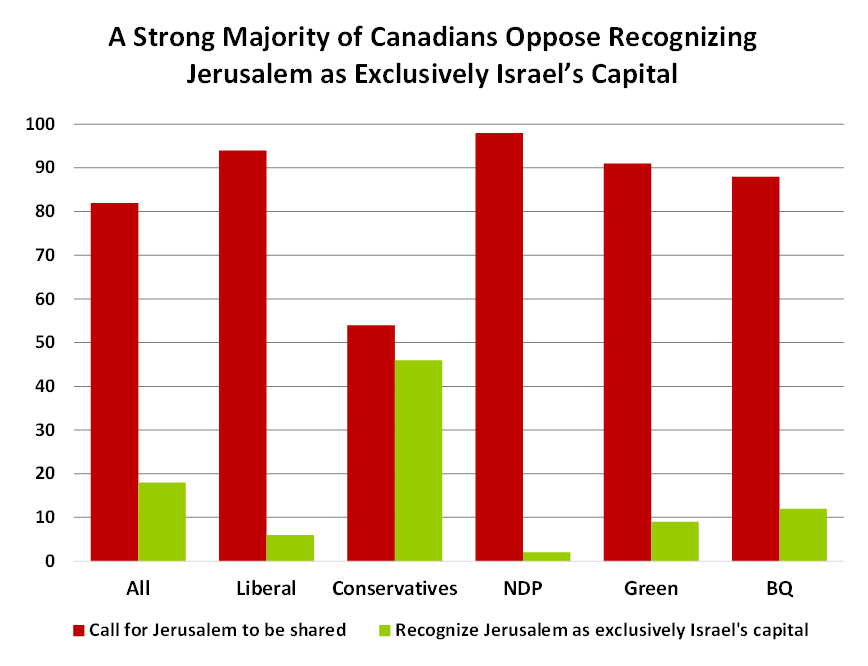
 Can you
Can you 
